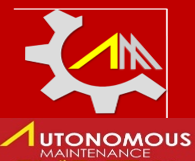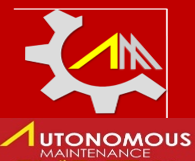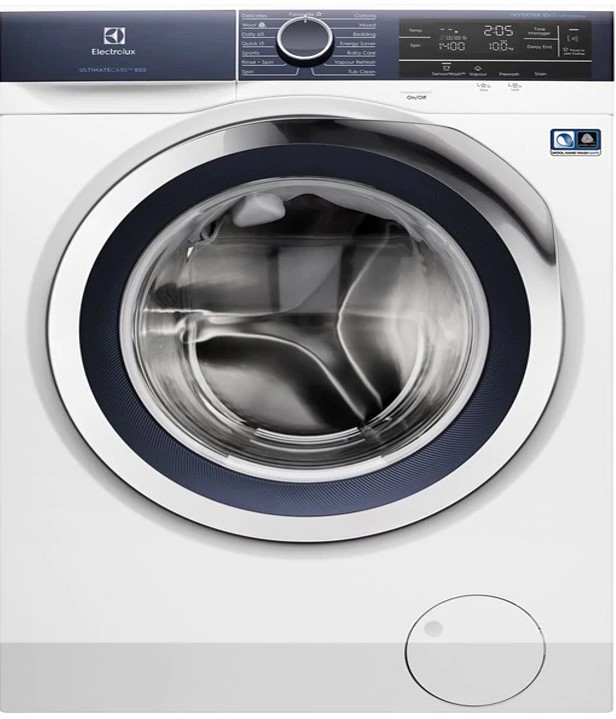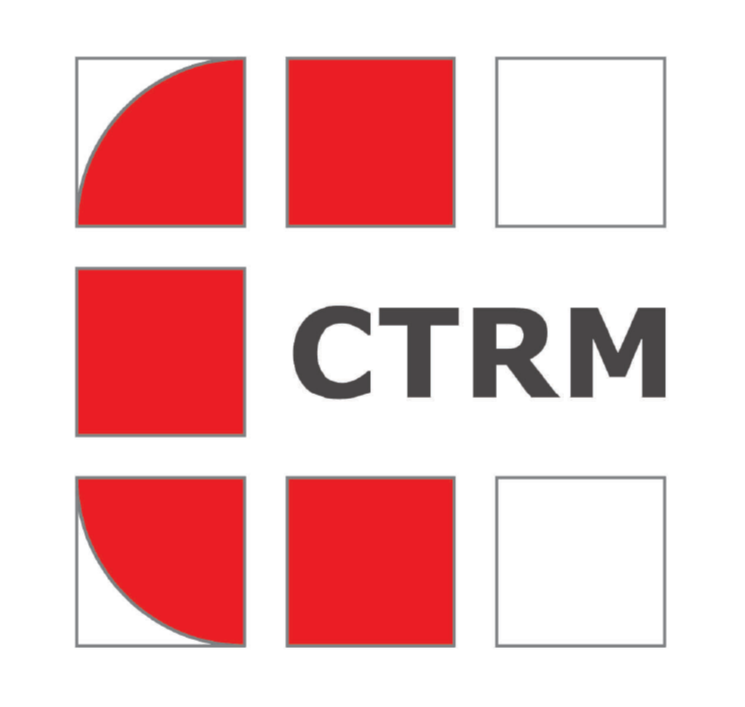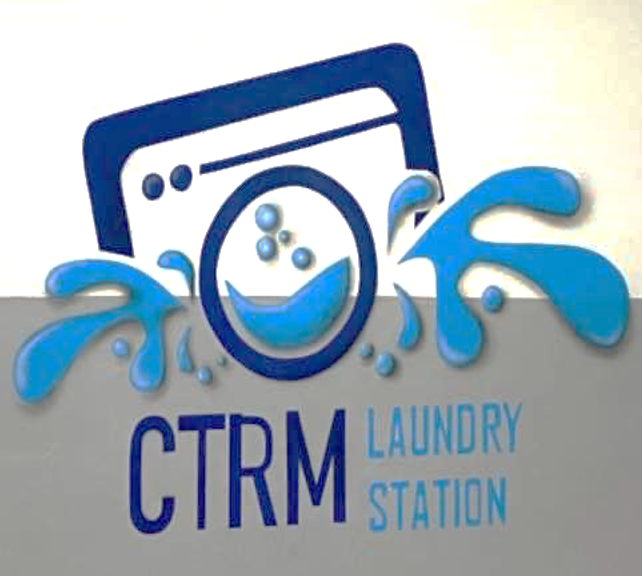Title Page
-
Microzone Area
-
Machine Name
-
Microzone Leader
-
Date & Time
-
Auditor
Inspection Page
-
Are you AM auditor or 5S auditor
- AM auditor
- 5S auditor
AM Checksheet
1. SUSTAINING AM STEP 1,2 AND 3
-
a) Is there evidence that AM activities plan being made in advance and participated by all members?<br>Sub Criteria 1<br>- Master / Group schedule<br>(Building maintenance activities available in Master Plan eg. floor maintenance, wall maintenance and ceiling maintenance)<br>- Team organization inclusive of maintenance members<br>- Layout / Ownership<br><br>Definition: <br>1- None<br>2- Available but information were not completed. <br>3- Available but information were completed partially. <br>4- Available but some information not completed and updated.<br>5- Available, information are complete and all were updated.
-
Sub Criteria 2<br>Is AM Step 1, 2 & 3 training for microzone leaders, PIC machine and team members conducted?<br>- Training record, training module <br><br>Definition: <br>1- None<br>2- Only the leader was trained with AM Step 1-3 general awareness<br>3- All were trained with AM Step 1-3 general awareness.<br>4- All were trained with AM Step 1-3 standard document and microzone leader can be a trainer.<br>5- All were trained with AM Step 1-3 standard document, microzone leader and PIC machine can be a trainer.
-
b) Is there evidence that AM activities being carried out at regular basis?<br>Sub Criteria 1<br>- Meeting Minutes, memos or document used to communicate with regards to AM activities.<br>- Attendance list <br><br>Definition: <br>1- None. Poor condition.<br>2- Not consistent. <br>3- Meetings were done consistently but poor attendance (<60%). <br>4- Meetings were done consistently but poor attendance (61-99%). <br>5- Meetings were done consistently with 100% attendance.
-
Sub Criteria 2<br>Is cleanliness in previous step well maintained?<br>- Cleaning standards, Cleaning reduction time & Difficult cleaning area<br><br> <br>Definition: <br>1- Poor condition.<br>2- Cleanliness at below average condition.<br>3- Cleanliness at average condition. allocation is sufficient and activity was done consistently. <br>4- Cleanliness at above average condition. There are cleaning schedule.<br>5- Cleanliness at excellent condition. Cleaning activities are as per schedule.
-
c) Are the basic equipment conditions attained by Step 3 well maintained?<br>- Lubricants & bolt tightening control rules, visual management<br>- Lubricants & bolt tightening standards, flow charts, diagrams<br>- Lubricants & bolt tightening inspection checksheet<br>- Difficult lubrication & tightening areas <br><br>Definition: <br>1- None<br>2- Available but not updated. Many information not complete.<br>3- Available but partially updated. Some information were not complete.<br>4- Available, some information not complete and updated. <br>5- Available, information are complete and all were updated.
-
d) Is there evidence fuguai detection and restoration being carried out on regular basis to support AM Step 1 - 3 activities?<br>Sub Criteria 1<br>- Fuguai tags, summary & mapping <br><br>Definition: <br>1- None<br>2- 1 to 5 fuguais recorded & tagged however auditor still can find other fuguais not tags. <br>3- 6 to 10 fuguais recorded & tagged and auditor still find other fuguais not tags. <br>4- >10 fuguais recorded & tagged and auditor still find other fuguais not tags. <br>5- Fuguais were tagged and auditor cannot find any fuguai not tagged. Fuguai mapping completed.
-
Sub Criteria 2<br>Fuguais closure rate<br><br>Definition: <br>1- None<br>2- ≤50% Close out rate<br>3- Fairly good ≥50% Close out rate.<br>4- Good 100% Close out rate<br>5- Good 100% Close out rate.
-
e) Are residual issues left from previous step resolved?<br>- Pareto analysis, Why-why analysis<br>- Kaizen report / Before-After <br>- Audit activities<br>- OEE analysis / Performance ratio / MTBF<br> <br>Definition: <br>1- None<br>2- All summary are not complete. Many data/info missing.<br>3- Some summary are not complete. 20% data/info missing.<br>4- Summary are completed and being used to support request from other section actions.<br>5- Summary are completed and being used to support request from other section actions. 80% problems were solved.
2. INSPECTION EDUCATION AND CHECKSHEET
-
a) Inspection manual development <br>- Inspection manual had been developed and understood by members<br>- Machine diagram availability<br>- All the parts type, name, structure and function of equipment clearly explained<br>- Phenomena, causes, criteria, evaluation and remedies of equipment defects <br> understood. All members can inspect equipment.. <br><br>Definition: <br>1- None<br>2- Available but not updated. Many information not complete. Not all members can inspect.<br>3- Available but partially updated. Some information were not complete. Some members can inspect.<br>4- Available, some information not complete and updated. All the members can inspect.<br>5- Available, information are complete and all were updated. All the members can inspect.
-
b) Overall inspection checksheet <br>- Inspecting standards had been developed and understood by members<br>- All inspection point are identified.<br>- Inspecting time targets, checking standards and specifications, work allocation <br> and areas are clearly identified.<br>- Overall inspection checksheet being used by members<br><br>Definition: <br>1- None. <br>2- Available but not updated. Many information not complete. Not all members use inspection checksheet.<br>3- Available but partially updated. Some information were not complete. Some members use inspection checksheet.<br>4- Available, some information not complete and updated. All the members use inspection checksheet.<br>5- Available, information are complete and all were updated. All the members use inspection checksheet.
-
c)Is Plant maintenance handover had been carried out? <br><br>- Training conducted by competent person / Maintenance engineer<br>- Training from maintenance to members had been conducted<br>- Training material, notes or manual <br>-Training attendance<br><br>Definition: <br>1- None<br>2- Available but some information were not complete. Only the leader were trained.<br>3- Available but information were partially completed. All were trained.<br>4- Available, some information not complete and updated. All were trained.<br>5- Available, information are complete and all were updated. All were trained and microzone leader can be trainer.
-
d) Is members inspection skill being evaluate? <br>Document:<br>- Training evaluation result (% passed)<br>- Skill chart (% competent) <br><br>Definition: <br>1- None<br>2- Not all members were evaluated and competent for AM responsibility<br>3- All members were evaluated and competent for AM responsibility<br>4- All were evaluated and competent. Only micro zone leader are competent in problem solving.<br>5- All were evaluated and competent. Micro zone leader, PIC machine are competent in problem solving.
3. SAFETY INSPECTION
-
a) Are safety equipment functions properly / personal protective equipment available?<br>- Safety inspection sheet / Hazard Diagram <br>- Personal protective equipment<br>- KYT sheet<br>- Avaibity of First aid kit, List of First aid items<br><br>Definition: <br>1- None<br>2- Available but not updated. Many information not complete. Not all members can inspect.<br>3- Available but partially updated. Some information were not complete. Some members can inspect.<br>4- Available, some information not complete and updated. All the members can inspect.<br>5- Available, information are complete and all were updated. All the members can inspect.
-
b) Diagnose location<br>- Minor defect on safety are being restored and well maintained<br>- Availability of safety signage and eye see label<br>- Existence of flammable and dangerous goods at machine area (chemical, Zink, thinner etc)<br>- Existence of excessive noise, air leak, oil leak<br><br>Definition: <br>1- Poor condition.<br>2- Below Average condition.<br>3- Average condition.<br>4- Above Average condition.<br>5- Excellent condition.
4. FASTENER INSPECTION
-
a) Are condition of bolts and nuts well adequate? <br><br>- All bolt had been marked<br>- No corroded, loose or bent nuts and bolts<br>- Minimum two threads exposed and no damaged threads<br>- Correct length of bolts<br>- Looseness prevention methods such as washers properly used<br>- Double nuts or match marks used for critical bolts<br><br>Definition: <br>1- Poor condition<br>2- Below Average condition.<br>3- Average condition.<br>4- Above Average condition.<br>5- Excellent condition.
-
b) Are all discovered defective parts corrected?<br>- Tool available for corrective actions<br>- Fuguai tag and summary<br>- Breakdown summary (Bar graph, pie chart, pareto chart)<br>- Problem solving report / Why-why Analysis<br>- Problem escalation to maintenance (Repair order)<br>- Maintenance to prepare MTBF<br><br>Definition: <br>1- None<br>2- Available but not updated. Many information not complete.<br>3- Available but partially updated. Some information were not complete.<br>4- Available, information are complete and all were updated.<br>5- Available, information are complete and all were updated with effective result.
5. POWER TRANSMISSION INSPECTION
-
a) Are condition of motor, belts, pulleys, chains, sprockets in good condition?<br><br>- No deteriorated or oil contaminated belts. Are belt tensions proper. No worn or misaligned pulleys<br>- No wear or slack in chain or sprockets. No oily contamination around chains<br>- No damage, misalignment, loose fixtures or play in shaft. No overheating, vibration or noise at bearings<br>- No noise, vibration or overheating at gears, breaks<br>- Critical areas visible through safety cover. Covers are adequately modified<br><br>Definition: <br>1- Poor condition<br>2- Below Average condition.<br>3- Average condition.<br>4- Above Average condition.<br>5- Excellent condition.
-
b) Are all discovered defective parts corrected?<br><br>- Tool available for corrective actions<br>- Fuguai tag and summary<br>- Breakdown summary (Bar graph, pie chart, pareto chart)<br>- Problem solving report / Why-why Analysis<br>- Problem escalation to maintenance (Repair order)<br>- Maintenance to prepare MTBF<br><br>Definition: <br>1- None<br>2- Available but not updated. Many information not complete.<br>3- Available but partially updated. Some information were not complete.<br>4- Available, information are complete and all were updated.<br>5- Available, information are complete and all were updated with effective result.
6. HYDRAULIC AND PNEUMATIC INSPECTION
-
a) Are hydraulic and pneumatic parts functions properly?<br><br>- No contamination, damage, leakage or vibration in hydraulic and pneumatic equipment, pipes, hoses, valves, fittings or any other parts<br>- No abnormal noise, vibration or overheating in rotary machinery, motors, solenoid and selector valves or any other hydraulic and pneumatic parts<br>- Are air filters, regulators and lubricators properly installed. <br>- Easy to inspect for oil quantity, oil levels satisfactory. <br>- No foreign particle in filters and condensed water drained<br>- Are pressure gauges, thermometers, level gauges properly installed, easy to inspect and actuating normally<br><br>Definition: <br>1- Poor condition<br>2- Below Average condition.<br>3- Average condition.<br>4- Above Average condition.<br>5- Excellent condition.
-
b) Are all discovered defective parts corrected?<br>- Tool available for corrective actions<br>- Fuguai tag and summary<br>- Breakdown summary (Bar graph, pie chart, pareto chart)<br>- Problem solving report / Why-why Analysis<br>- Problem escalation to maintenance (Repair order)<br>- Maintenance to prepare MTBF<br><br>Definition: <br>1- None<br>2- Available but not updated. Many information not complete.<br>3- Available but partially updated. Some information were not complete.<br>4- Available, information are complete and all were updated.<br>5- Available, information are complete and all were updated with effective result.
7. FUTURE PLAN
-
a) Are outstanding problems being clearly summarized for action in next step?<br><br>Definition: <br>1- No.<br>2- All outstanding problems are not complete. Many data/info missing.<br>3- Some outstanding problems are not complete. Some data/info missing.<br>4- All outstanding problems are completed and being used to support request from other section actions. Some problems were solved.<br>5- All outstanding problems are completed and being used to support request from other section actions. All problems were solved.
COMPLETION
-
Completed By : (Name &Signature)
1) 1S Sorting activity
-
Is 1S (Sort) being practiced and maintained Sub criteria 1: Non-compliances include : 1. Unneeded items i.e leftover foods 2. Foreign Object Debris (FOD) others than dust 3. Identify, segregate and label of scheduled waste or general waste with PIC 4. Unsuitable / incorrect tools used by the user 5. Masking tape at regulators
- 0) No or very little sorting activities
- 1) 3 non-compliances per macro zone whereby unneeded or misplaced items are found.
- 2) 2 non-compliances per macro zone whereby unneeded or misplaced items are found.
- 3) 1 non-compliance per macro zone whereby unneeded or misplaced item is found.
- 4) No unneeded or misplaced items found except those at red tag area(s).
- 5) No unneeded or misplaced items found except those at red tag area(s).
-
Sub criteria 2: Options available: 1. Centralized or multiple tag by zones 2. Red tag flow chart is to be approved by 5S Chairman (COO)
- 0) No red tag area available
- 2) Red tag area(s) is(are) available.
- 3) Red tag area(s) is(are)available and all red tag items are tagged.
- 4) Red tag area(s) is(are)available, all red tag items are tagged, and monitoring list is updated.
- 5) Red tag area(s) is(are)available, all red tag items are tagged, and monitoring list is updated AND 5S red tag flow chart & PIC is available.
3) 2S Set to order activity
-
Is 2S (Set to order) being practiced and maintained. Areas to be assessed, if applicable ( non-exhaustive): Area Demarcation - Footprint / Lining / Marking Visual Controls - Signage - Labels and PIC -Point of use (POU) - Personal stationery - Chemical bottle (label, service tag i.e) - Racks well maintained; tools and materials properly stacked and spaced; - Dangerous machine parts adequately guarded (follow as machine manual). Storage Location - Consumable storage - Material Inventory storage - Stationery storage - Toolings storage - Chemical storage/cabinet System establishment - FIFO - Min / max - Filing system Safety - Chemical storage or cabinet (e.g. chemical list, PIC and safety data sheet) - Chemical bottle (e.g. label and servicable tag) - First aid kit (e.g. quantity, label and PIC) - Fire fighting system (e.g. fire extingusher / hose reel and PIC) - No obstruction on fire escape route and fire fighting system (e.g. fire extinguisher/hose reel/hydrant) - Elevators, hoists, conveyors, etc. properly used with appropriate signals and directional warning signs - Adequate of PPE equipment provided, maintained, stored and used - Emergency safety showers and eye wash stations in good working condition - PMA/PMT/PMD (registered equipment) updated, valid and displayed
- 0) A lot of non compliances
- 1) ≥4 non-compliances per microzone on Set-to-order
- 2) 3 non compliances
- 3) 2 non compliances
- 4) 1 non compliance
- 5) No or negligible non compliance
4) 3S Shine activity
-
Is 3S (Shine) being practiced and maintained Areas to be assessed (non-exhaustive): 1. Wire and hose dressing 2. Presence of dust, dirt, grime, oil and other contamination 3. Restoration of torn and faded labels or any visual materials 4. General restoration on equipment or working areas 5. Rodents and smell free working area. 6. Area brightness within lux standard (refer to lux reading record) 7. POU system availability and workability.
- 0) Not being practiced and maintained at all
- 1) ≥ 4 non compliances
- 2) 3 non compliances
- 3) 2 non compliances
- 4) 1 non compliance
- 5) Most of the item are clean and duly restored
-
Improvement activities to eliminate root causes or source of contamination
- 1) has been planned
- 3) has been implemented
- 5) has been implemented with effective result
-
Routine cleaning activity with appropriate tools.
- 0) No routine cleaning and cleaning tools available.
- 5) Routine cleaning activity (start and/or end of working hour). Availability of cleaning tools & restoration activities.
-
Routine lux recording recorded
- 0) No routine of lux recording recorded.
- 5) Routine lux recording available per schedule.
5) 4S (Standardization) and 5S (Sustain)
-
Is 4S (Standardization) and 5S (Sustain) being practiced and maintained. Sub-criteria 1 (Standardization): Activity implement per standard established? (score given shall be the same as score given for criteria 2S) Note: No unneeded items (1S). Maintenance activities are available in 5S Master Schedule . Document needed: Email ,SRF, TDL,Minute of meeting
- 0) No evidence of sustaining activity
- 1) ≥4 non-compliances per microzone on Standardization non-compliances.
- 2) 3 non-compliances per microzone on Standardization non-compliances.
- 3) 2 non-compliances per microzone on Standardization non-compliances.
- 4) 1 non-compliance per microzone on Standardization non-compliances.
- 5) No non-compliance
-
Sub-criteria 2 (Sustain) : Is there any Continuous Improvement activity conducted and been revisit from previous audit/finding? 1. Audit report 2. Genba finding 3. Success Stories (Before/After)
- 2) <50% finding close (within scope) and support document raised (if any) with evidence (before/after).
- 3) >50% finding close (within scope) and support document raised (if any) with evidence (before/after).
- 4) 100% finding close (within scope) and support document raised (if any) with evidence (before/after).
- 5) 100% finding close and action towards document raised (if any) are close with evidence (before/after) and standard established.
-
Sub-criteria 3 (Building maintenance - Sustain) Compliance of condition of floor, wall and ceiling herein refers to the following matters: 1. Floor maintenance - shine, free from unneeded item, dented, flake, chirp off and others contaminants. 2. Wall maintenance - shine, free from damage, unneeded item, uneven paint, flake, chirp off, watermark (mouldy), handprint and malfunction trunking. 3. Ceiling maintenance- shine, free from dented unneeded item, flake, chirp off, watermark, handprint, leaking, missing ceiling panels
- 0) Not being practiced and maintained at all
- 1) ≥4 non-compliances or more per microzone on wall, ceiling and floor.
- 2) 3 non-compliances per microzone on on wall, ceiling and floor.
- 3) 2 non-compliance per microzone on wall, ceiling and floor.
- 4) 1 non-compliance per microzone on wall, ceiling and floor.
- 5) Most of the items are clean and duly restored for wall, ceiling and floor
